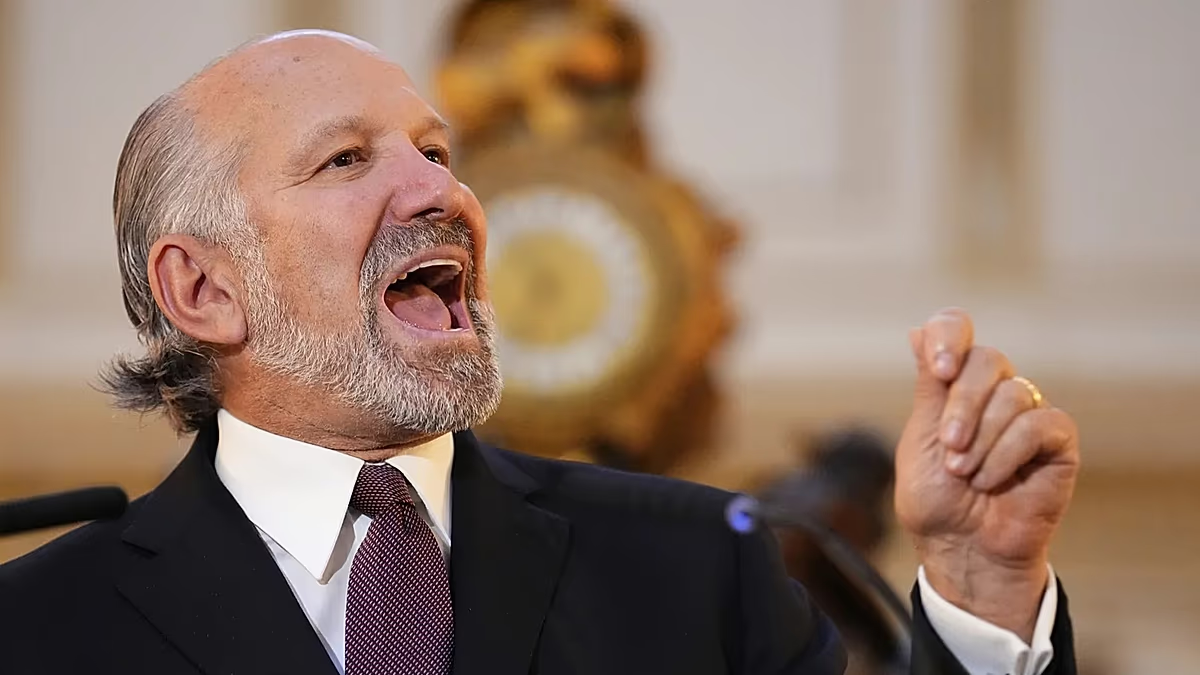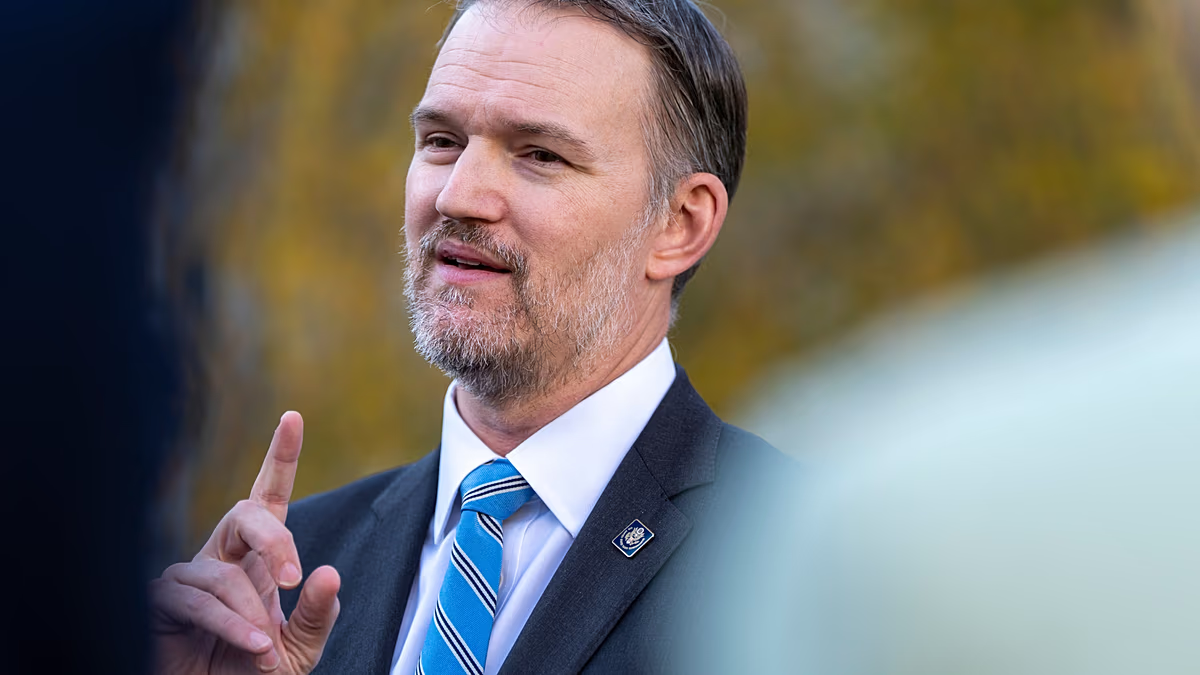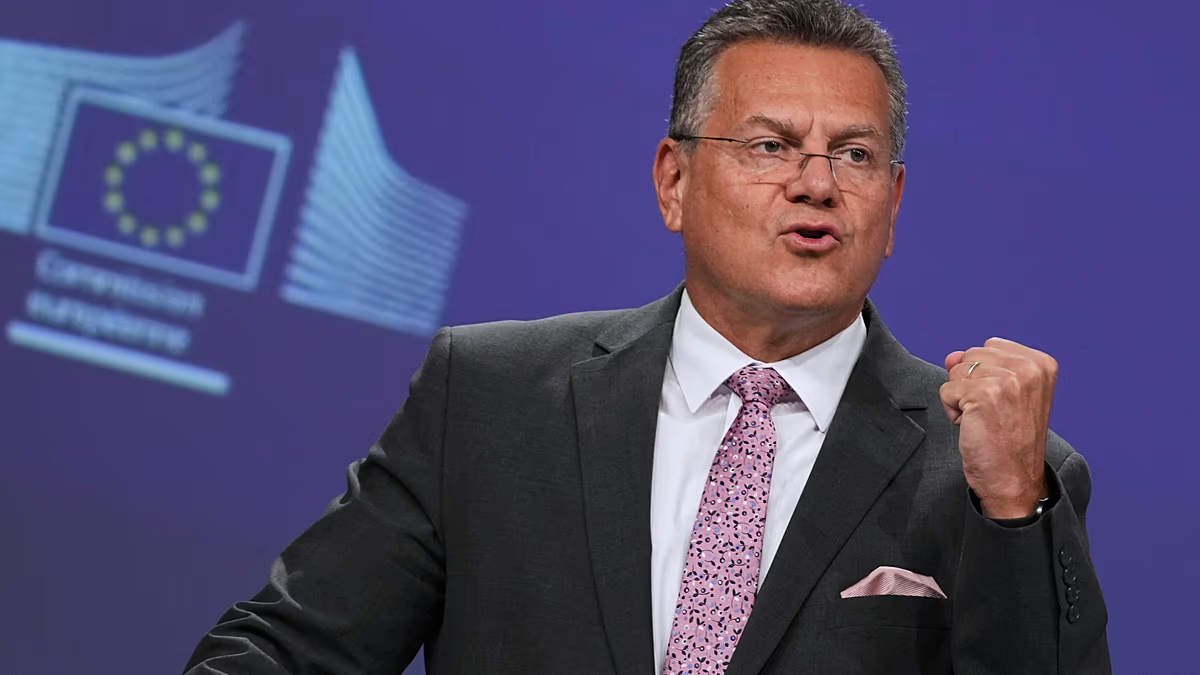US to cut steel tariffs only if EU agrees to soften digital rules enforcement in return
Published on
24/11/2025 – 18:20 GMT+1
US Commerce Secretary Howard Lutnick said that Washington can reduce duties on EU steel and aluminium but only if the Europeans agree to ease the implementation of digital rules following a meeting in Brussels on Monday.
Lutnick, who is a close ally of President Donald Trump and negotiated on his behalf a trade deal with the EU over the summer introducing 15% tariffs, said that European should reassess the way they implement their flagship policies on digital regulation if they want further tariff relief. Lutnick did not call to remove the rules but did say the way in which they are applied should be “more balanced” for American tech companies.
Brussels is desperately seeking to obtain a reduction of the 50% tariffs that the Trump administration imposed on European aluminium and steel in June under pressure from the industry.
The US does want the EU “to put these rules away, but find the balanced approach that works for us,” he told reporters in Brussels. “Then we will, together with them, handle the steel and aluminium issues.”
“The enforcement is quite aggressive at times”
Lutnick and US trade representative Jamieson Greer were in Brussels meeting with EU27 trade ministers and Commission boss Maroš Šefčovič for a working lunch.
The implementation of the trade deal signed over summer was at the center of the discussion, which was “open and direct,” according to an EU diplomat.
The EU and the US clinched a trade deal in July in which the US tripled tariffs on EU while Europeans agreed to cut tariffs for most US industrial goods at 0%. US tariffs on EU steel and aluminium remain stuck at a much higher rate of 50% despite the deal.
Lutnick and Greer also met EU Tech Commissioner Henna Virkkunen who stressed in a statement the importance of the Digital Market Act (DMA) and the Digital Services Act (DSA), the two landmark digital regulations applied in the EU. The comments suggest the Commission is not ready to water them further for the time being.
To counter the US offensive on its digital legislation, EU Trade Commissioner Šefčovič said that the EU is working hard to explain its legislation to the US and stressed that there no discriminatory practices applied to US companies. The rules, he argued, are the same for everyone operating in the EU single market regardless of their origin.
Still, the US insists that is not the case and American Big Tech is being punished.
“The enforcement is quite aggressive at times,” Greer said about EU tech rules, adding that the US government wants to make sure their companies do not see their global revenues “affected” by foreign rules. In his comments, Greer’s tone was severe.
Brussels recently launched investigations against Amazon and Microsoft under the DMA which prevents big platforms from abusing their dominance in the tech market. It also hit Google with a €2.95 billion over antitrust rules despite the threats from the US.




